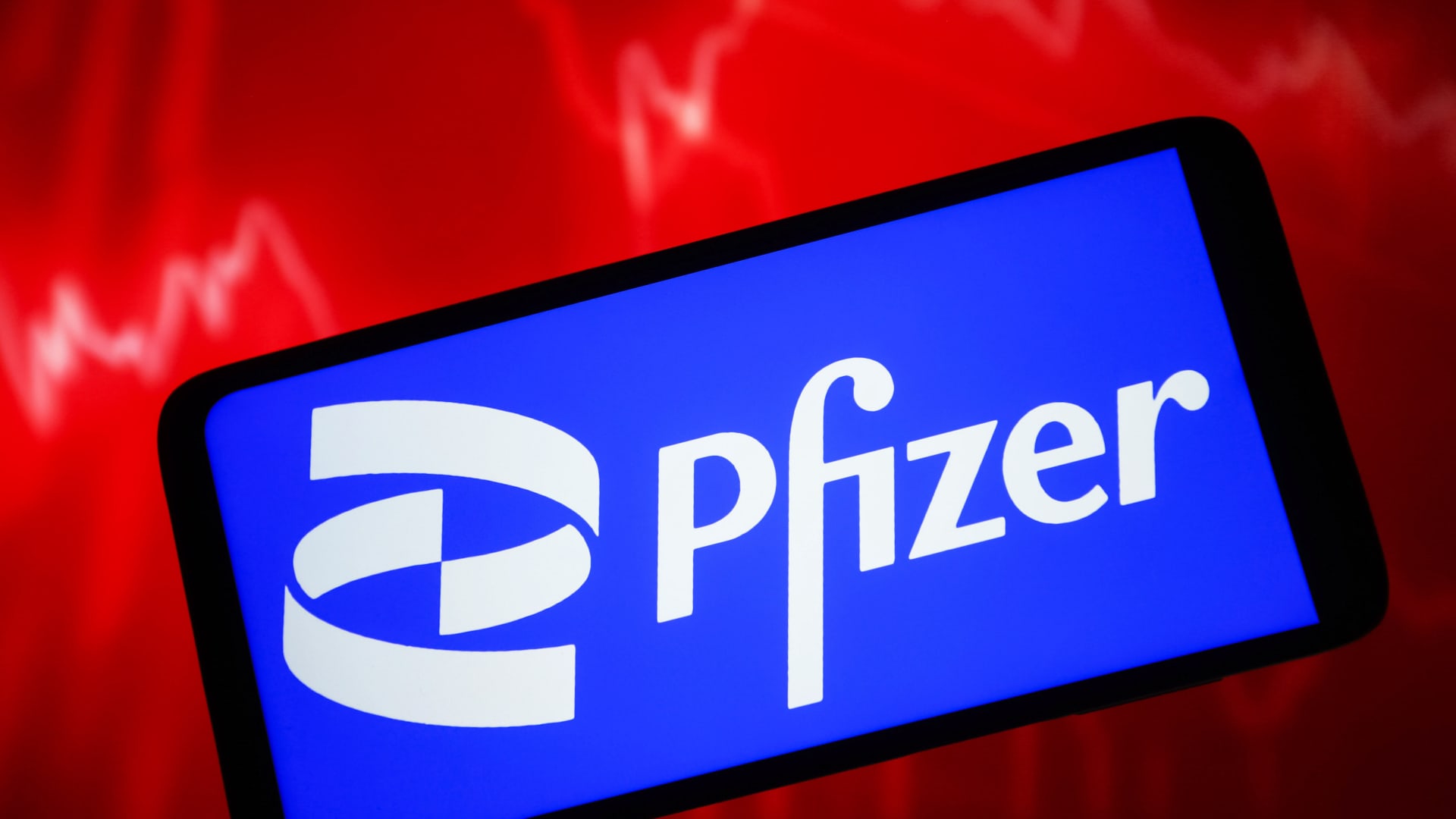Pfizer on Tuesday reported second-quarter adjusted earnings that topped Wall Street’s expectations, but posted revenue that fell short of estimates as Covid product sales plunged.
Pfizer reported second-quarter sales of $12.73 billion, down 54% over the same period a year ago. Excluding sales of the company’s Covid vaccine and Covid antiviral pill Paxlovid, revenue grew 5% operationally.
related investing news
Together, the products raked in $1.6 billion in revenue for the quarter. That compares with roughly $14 billion in sales during the same period a year ago.
The decline isn’t a surprise. Pfizer and rival drugmakers like Moderna have seen a steep drop in Covid-relates sales this year as the world emerges from the pandemic and relies less on blockbuster vaccines and treatments that help protect against the virus.
That drop off, which has weighed on Pfizer’s sales during the past two quarters, shows no signs of abating.
Here’s how Pfizer results compared with Wall Street expectations, based on a survey of analysts by Refinitiv:
- Earnings per share: 67 cents per share adjusted, vs. 57 cents per share expected
- Revenue: $12.73 billion, vs. $13.27 billion expected
Pfizer booked a net income of $2.33 billion, or 41 cents per share. That fell from $9.91 billion, or $1.73 per share, during the same period a year ago.
Excluding certain items, the company’s earnings per share were 67 cents per share for the quarter.
Looking ahead, the New York-based company narrowed its 2023 sales forecast to $67 billion to $70 billion, from a previous forecast of $67 billion to $71 billion.
Pfizer reiterated its full-year adjusted earnings outlook of $3.25 to $3.45 per share.
The company expects Covid-related sales to decline for the year.
Pfizer reaffirmed its forecast of $13.5 billion in Covid vaccine sales in 2023 and $8 billion in revenue for Paxlovid.
Pfizer noted that guidance for the product is based on both existing supply contracts with governments and sales from the commercial market in the U.S. The company will start selling Covid-related products directly to health care providers this fall.
Shares of Pfizer have fallen nearly 30% this year, putting the company’s market value at roughly $203 billion.
Pfizer is in a transition period as it navigates its post-pandemic boom.
The company is pinning its hopes on mergers and acquisitions and a record pipeline to help the company pivot to new areas of growth.
Investors are eager for executives to provide updates on Pfizer’s several near-term drug launches, which CEO Albert Bourla said in May will help grow non-Covid revenues “at a faster rate” during the second half of the year.
That includes Pfizer’s vaccine for respiratory syncytial virus and its updated Covid shot – both of which are slated to roll out during the third quarter.
Executives are also likely to be asked about the company’s $43 billion acquisition of cancer therapy maker Seagen – a deal Pfizer believes could contribute more than $10 billion in risk-adjusted sales by 2030.
The U.S. Federal Trade Commission asked Pfizer and Seagen for more information on their proposed merger during the second quarter. The move came as the agency cracks down on similar deals in the pharmaceutical industry.
Executives will also likely to address the tornado that hit Pfizer’s major plant in North Carolina after the company told hospitals last month that more than 30 drugs may see new supply disruptions due to the damage.
Pfizer will hold a conference call at 10 a.m. ET on Tuesday.



